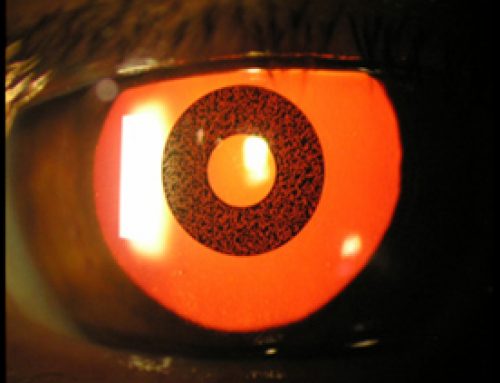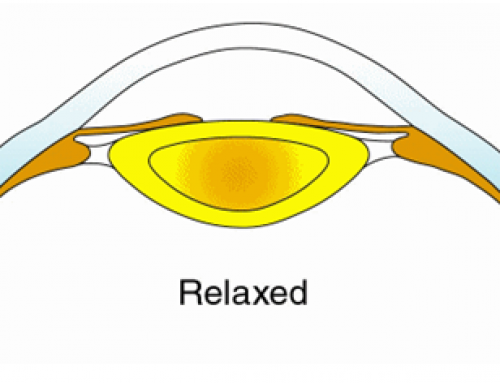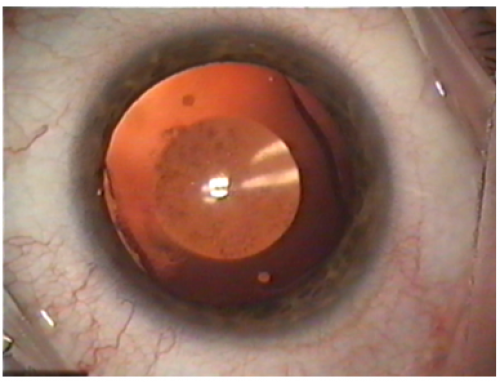Inside of eyeball, there is a natural lens, called crystalline lens that during the youth is transparent and allows clear vision at all distances. However, over the years, due to various changes that happen in the crystalline lens as in ciliary muscle, the ability of accommodation decreases. This reduction in the ability of accommodation induces poor visual quality in near vision. Nowadays, there are diverse techniques that allow improving the quality of vision in presbyopic patients, as multifocal contact lenses, progressive lenses or even surgery techniques. A variety of corneal and intraocular surgery techniques have been developed, with the purpose of presbyopia correction. Precisely, cataract or refractive lens exchange (RLE) surgeries improves the vision in presbyopic patients by means of multifocal or accommodative lens implantation. The introduction of small incision surgery (MICS) as the innovations developed in intraocular lens (IOLs) technology have allowed improving the outcomes and safety of these procedures. Concretely, in module 2 about lens surgery, the different surgical modalities and recent advances in crystalline lens surgery are explained.
Which is the difference between cataract and refractive lens exchange surgery?
In cataract surgery, the crystalline lens opacified is replaced by an intraocular lens. In fact, the advantages developed in IOLs technology allow that the visual quality after the intervention improves from near to far vision, even in intermediate distances. Cataract surgery has the advantage that in one surgery it is possible to replace the opacified crystalline lens as an alternative for presbyopia. However, cataract surgery is necessary very often in patients older than 60 years. This situation in some cases may be a problem because the first symptoms of presbyopia appear around their forties. In these situations, will be necessary an optometric or contactologic alternative to improve the vision. For this reason, an alternative to multifocal contact lenses or progressive lenses is refractive lens exchange, which is considered as an effective surgery to improve visual quality in presbyopic patients. During the surgery, the non-opacified crystalline lens is replaced by an intraocular lens, so in the future will not be necessary to perform another surgical procedure for cataracts. In the intervention in addition to correct the near vision, the optical quality improves to all distances correcting the refractive errors as myopia, hyperopia or astigmatism.
Refractive lens exchange surgery is a procedure very popular in clinical practice and in research. Different technologies have been developed to improve the vision at all distances as multifocal and accommodative intraocular lenses. Due to the importance of this intervention in clinical practice, are necessary an adequate and extensive training programs. Precisely, in the Online Course in Refractive Clinical Methodology Cataract and Corneal Surgery, we provide widely formation about the surgical procedure and visual outcomes of refractive lens exchange. Concretely, in part A about surgical modalities of module 2, Refractive Lens Exchange is explained. Moreover, our teachers are professionals with different scientific studies published in Pubmed Central.
Some scientific references of the course about this topic
Alió JL, Pikkel J. Multifocal Intraocular Lenses. The Art and the Practice. Springer, 2014.
Alio JL, Simonov A, Plaza-Puche AB, Angelov A, Angelov Y, van Lawick W et al. Visual Outcomes and Accommodative Response of the Lumina Accommodative Intraocular Lens. Am J Ophthalmol. 2016 Apr; 164:37-48.
Alio JL, Grzybowski A, El Aswad A, Romaniuk D. Refractive lens exchange. Surv Ophthalmol. 2014 Nov-Dec; 59(6):579-98.
Alió JL, Grzybowski A, Romaniuk D. Refractive lens exchange in modern practice: when and when not to do it? Eye Vis (Lond). 2014 Dec 10; 1:10.
Alió JL, Tavolato M, De la Hoz F, Claramonte P, Rodríguez-Prats JL, Galal A. Near vision restoration with refractive lens exchange and pseudoaccommodating and multifocal refractive and diffractive intraocular lenses: comparative clinical study. J Cataract Refract Surg. 2004 Dec; 30(12):2494-503.




